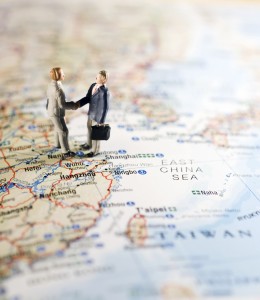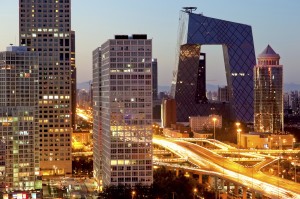 “Is the third wave of outmigration emptying China?” This provocative headline in the influential Southern Daily in China on 13 December 2011 reflects a topic of heated debate since the end of the 2000s. The third wave refers to a noticeable surge of outmigration at the turn of the twenty-first century after the first wave in the early 1980s and the second in the early 1990s.
“Is the third wave of outmigration emptying China?” This provocative headline in the influential Southern Daily in China on 13 December 2011 reflects a topic of heated debate since the end of the 2000s. The third wave refers to a noticeable surge of outmigration at the turn of the twenty-first century after the first wave in the early 1980s and the second in the early 1990s.
The drive for investor programmes
The on-going debate was triggered by a dramatic increase in so-called “investment emigration” —wealthy individuals obtaining residence permits abroad by agreeing to invest a significant sum of money in the destination country. Depending on the country and their investor visa regime, immigrant investors may purchase property, government bonds, donate a sum to national development funds, or invest in private-sector businesses. In return, immigrant investors receive some residency rights in the destination country: this may be immediate citizenship, permanent residence, or temporary residence with an eventual pathway to permanent residence.
Wealthy Chinese investors drive much of the demand for these immigrant investor programmes. For example, in the United States, Chinese nationals received 80 percent of all immigrant investor (EB-5)[1] visas in 2012.[2] Prior to the programme’s closure in 2014, China had been the leading source country for immigrant investors in Canada throughout the 2000s. In 2010, 58 percent of immigrant investors were Chinese nationals, followed by Taiwan at 8 percent.[3] Similarly, in Australia, Chinese nationals were responsible for more than 91 percent of applications (up to February 2014) for the new Significant Investor Visa program, introduced in late 2012;[4] and 64 percent of all investment migrants in 2011-12 were Chinese nationals, up from 8 percent in 2000-01.[5] One source estimates that investment migration from China to the U.S. in 2012 alone drained USD 3.6-6.1 billion excluding the expenditure for housing, education and daily subsistence.[6]
The wealthy and the skilled
Many more wealthy Chinese nationals have considered, or are considering, emigrating overseas. A recent survey of the high-income population in eighteen major Chinese cities found that 60 percent of “super high net value” individuals—those who possess assets of 10 million yuan or more (approximately USD$1.6 million)—have considered emigrating.[7] Among the “high net value” individuals—those who possess assets of 6 million yuan (approximately USD$970,000) or more—who have considered emigration, 77 percent identified the United States or Canada as their intended destinations.[8]
 Apart from wealthy migrants, China is also a leading source country for skilled migrants. The emigration rate of China’s highly educated population is now five times as high as the national average. In contrast the numbers of low- or unskilled migrants from China grow at a much slower pace; thus the trend of “upward concentration”.
Apart from wealthy migrants, China is also a leading source country for skilled migrants. The emigration rate of China’s highly educated population is now five times as high as the national average. In contrast the numbers of low- or unskilled migrants from China grow at a much slower pace; thus the trend of “upward concentration”.
Upward concentration is manifested itself not only in terms of absolute numbers, but also in terms of the frequency and freedom of mobility. Rich migrants enjoy ever-greater freedoms for permanent settlement and back-and-forth transnational movement. In sharp contrast, unskilled migrants are subject to tight controls and recruitment procedures that are complicated and costly for migrants. Unlike skilled migrants who can switch visa categories with relative ease, stringent return requirements in labor agreements mean that low- or unskilled migrants have little opportunity to settle overseas, and their migration journeys, both outward and return, are tightly controlled.
Upward concentration is also witnessed within each of the major emigration streams. The amount of investments made by investor migrants have ever increasing. Student migration is characterized by the competition for reputable colleges and programs. Finally, unskilled migration also experienced significant increase in intermediary fees, even though the incomes and working condition remained largely the same over the last two decades. In sum, migration becomes more resource intensive across board.
The rise of China and social inequality
This trend of upward concentration coincides with the ‘rise of China’. The outflow escalates rapidly after the 2008-09 financial crisis, a crisis widely seen as a watershed that indicates the decline of the West and the rise of China. China not only survived the crisis, but came out as more influential than before on various fronts at the international stage. This coincidence is in one sense not surprising as the upward concentration of emigration and the rise of China are both associated with growing wealth and deeper integration to the world. But the fact that the emigrants, who are winners in China’s rise, who have not only benefited much more as compared other groups in China, but are also among those who perform the best globally,[9] decide to vote by feet, also reveals the other side of the rise of China, particularly the deep social anxiety and political uncertainty.
 While the rich are seeking overseas bases for their wealth and family due to the fear about China’s political future and deteriorating environment, those in the lower social strata are pressured to “catch up” and some invest all the family savings for low-end jobs overseas. The upward concentration does not indicate increasing opportunities for upward social mobility. On the contrary, the current trend implies a narrowing down of channels of social mobility for those of lower social strata. Emigration from China is increasingly a means of reinforcing and reproducing social inequality rather than a means of mitigating it.
While the rich are seeking overseas bases for their wealth and family due to the fear about China’s political future and deteriorating environment, those in the lower social strata are pressured to “catch up” and some invest all the family savings for low-end jobs overseas. The upward concentration does not indicate increasing opportunities for upward social mobility. On the contrary, the current trend implies a narrowing down of channels of social mobility for those of lower social strata. Emigration from China is increasingly a means of reinforcing and reproducing social inequality rather than a means of mitigating it.
[1] Immigrant investors must invest $1 million (or $500,000, if in a Targeted Economic Area) and create or preserve at least 10 jobs for U.S. workers. In exchange, they are awarded a temporary residence permit that becomes permanent if they reach this job creation/preservation threshold.
[2] U.S. Department of State, Bureau of Consular Affairs, “Table V: Immigrant Visas Issued and Adjustments of Status Subject to Numerical Limitations, Fiscal Year 2012,” in Report of the Visa Office, 2012, http://travel.state.gov/content/dam/visas/Statistics/AnnualReports/FY2012AnnualReport/FY12AnnualReport-TableV-PartIII.pdf.
[3] CIC, “Business Immigrants—Investors. Findings from the Longitudinal Immigration Database (IMDB),” IMDB 2008 Research Series, March 2012: 4, http://www.cic.gc.ca/english/pdf/pub/imdb/INV_3.pdf.
[4] Cited in a speech by the Hon. Scott Morrison MP, Minister for Immigration and Border Protection, to the CPD Immigration Law Conference, Sydney, March 14, 2014, http://www.minister.immi.gov.au/media/sm/2014/sm212587.htm.
[5] Cited in Shao Chunfen 2014: 161-2. Shao Chunfen. 2014. “Chinese Elite Migration to Australia: Current Situation, Consequences and Trends.” In Wang Huiyao and Liu Guofu eds. Annual Report on Chinese International Migration (2014). Beijing: Social Sciences Academic Press.:156-172.
[6] Wang Huiyao. 2014. “New Characteristics and General Trends of Chinese International Migration” In Wang Huiyao and Liu Guofu eds. Annual Report on Chinese International Migration (2014). Beijing: Social Sciences Academic Press.: 1-48. Page 22.
[7] Bank of China and Hurun Research Institute (2011) 2011 Private Banking White Paper.
[8] Bank of China and Hurun Research Institute, White Paper: 8.